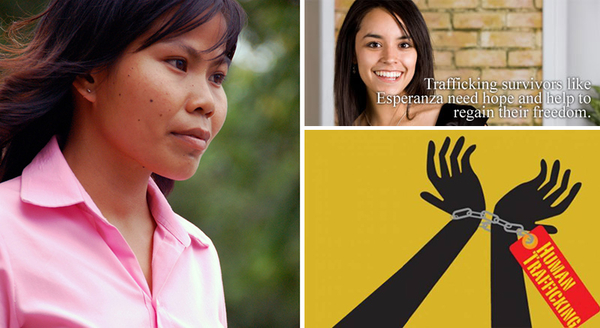Sex Trafficking: The Abuse of Our Time
George Phillips/ Gatestone Institute/November 11/15
The State Department’s Trafficking in Persons Report estimates that more than 44,000 trafficking victims have identified throughout the world, out of which the Department of Justice has gained convictions in just 184 cases.
Compare this to the International Labor Organization 2012 estimate of a total of 20.9 million trafficked victims in the world and hundreds of thousands in the United States.
The media usually pays scant attention to their plight.
Esperanza was a sixteen-year-old girl when she was brutally raped by a man named Rey. He forced her to become a sex slave, and eventually brought her to New York, where she was raped, beaten and threatened in brothels day after day
Like so many other trafficking victims, Esperanza could not speak English. A man who saw the bruises on her body connected her with Safe Horizon, a program that specializes in helping trafficking victims; they helped to rescue her.
On the other side of the world from Esperanza, Sina Vann, in Cambodia, was taken as a sex slave when she was 13.
Sina and the other girls were kept in underground cages — not able to see the difference between night and day. They were then brought into a room where they were raped by man after man.
Sina was rescued in a raid organized by a former sex slave, Somaly Mam, who now runs an anti-trafficking program.
Sina Vann (left) and Esperanza (upper right) were both kept as sex slaves and forced into prostitution as children, in Cambodia and the United States respectively.
The fifteenth anniversary of the landmark Trafficking Victims Protection Act (TVPA) of 2000 took place recently, on October 28.
After hearing of the plight of many women in Eastern Europe, Congressman Chris Smith of New Jersey authored the Act to set forth the legal framework for prosecuting criminals involved in the crimes of modern day slavery, and to support traumatized victims in the U.S.
In addition to strengthening U.S. laws, the TVPA also targeted human trafficking throughout the world. The State Department annually reports on the efforts of all nations to combat trafficking. It also targets with sanctions on non-humanitarian aid countries that fail to meet minimum standards.
Last year, thanks to their lack of effort to combat human trafficking, authoritarian regimes including Iran, Russia, Venezuela, and Zimbabwe, along with 19 other countries, were subjected to sanctions.
Nevertheless, even though from 2007 to 2014 there were a total of 218 new or amended anti-trafficking laws in the world, only a small percentage of the world’s trafficked victims are being rescued.
The State Department’s Trafficking in Persons Report estimates that more than 44,000 trafficking victims have been identified throughout the world, out of which the Department of Justice has gained convictions in just 184 cases.
Compare this to the International Labor Organization 2012 estimate of a total of 20.9 million trafficked victims in the world, with hundreds of thousands in the United States.
A United Nations report also shows that trafficking among children is on the rise. One out of three trafficking victims is a child; girls and women make up 70% of trafficking.
The media usually pays scant attention to their plight. A University of North Carolina study details how, when it comes to stories about sex trafficking victims, the media often fails to report the nature of the crime and the need for action.
Only 16% of sex trafficking cases were covered as a human rights issue, according to the study, and 41% failed to mention possible solutions to the tragedy of human trafficking.
Many newspapers advertise “massage parlors” — often fronts for trafficking and prostitution rings — in their sports pages.
At the forefront of trying to uncover massage parlors that are fronts for these rings has been, for example, the Polaris Project, a Washington DC based anti-trafficking organization. It estimates that in the U.S. there are an estimated 9,000 massage parlors, in which, every day, 27,000 women are suffering in prostitution or forced human trafficking. The Polaris Project’s hotline has identified more than 2,000 cases of human trafficking related to massage parlors.
In 2010, after years of pleas from the Polaris Project on behalf of victims of trafficking and prostitution, The Washington Post finally announced that it would no longer accept ads from massage parlors.
Yet, fifteen years after the signing of TVPA, the fight continues.
Esperanza and Sina are two of the very few lucky ones who have been rescued from human trafficking. But all of us, especially in the media, need dramatically to increase our efforts to rescue the millions of others trapped in one of the darkest, most vicious human rights violations of our time.
George Phillips served as an aide to Congressman Chris Smith of New Jersey, working on human rights issues.
© 2015 Gatestone Institute. All rights reserved. No part of the Gatestone website or any of its contents may be reproduced, copied or modified, without the prior written consent of Gatestone Institute






















